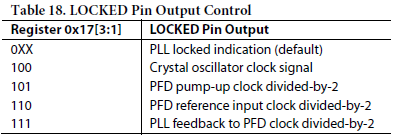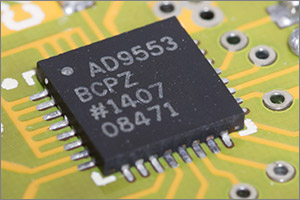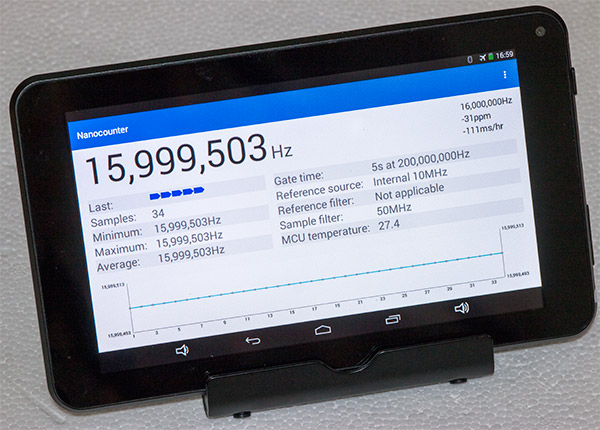
Testing
Oh this was a tale of ups and downs. After assembly the first thing that I did was attach the ST-Link/v2 programmer and check if the MCU was alive. It was. Check that one off the list.
I then set about writing the code that loads the FPGA bitstream into the FPGA. Success again. I’m on a roll here.
Next I need to program the PLL so I wrote the SPI code to load the register values to it. The registers loaded OK but oh no the PLL doesn’t lock. Not good. Not good at all. The AD9553 has some basic debugging features built in to it that allow you to route some of the internal clocks to the ‘lock’ pin and that can help you determine where the fault lies.

The only clock that gave me anything at all was the PFD reference input. At least that showed that the input clock multipliers and dividers were working. The device wasn’t totally broken. I put the board under the microscope and inspected the pads along the side of the QFN. Everything looked good. Suspicion naturally fell on the ground pad because I can’t see it to check it. All I could tell was that the solder bump on the ground pad had definitely melted because the QFN had sat down flush to the board. But what if the solder had wicked down the vias? It didn’t look like it from below. I spent hours fiddling with the debug settings in the AD9553 and was just about ready to give up when I posted a question detailing the symptoms in the ADI forums.

Something wasn’t right in there
Programming the AD9553 involves writing the registers, commiting them to the device and then calibrating it, after which you should get a lock. An engineer replied that the order of the calibration commands that I was issuing didn’t look right and suggested a fix. It worked! I got a PLL lock and have never failed to get a lock ever since. I can’t thank the ADI engineers enough that they take the time to answer hobbyist questions on their forums.
Now it’s time to fire up the Android app and check out the entire thing, front to back. There’s actually a gap of a couple of months here as I wrote the app over the course of some free evenings and weekends.

The app running on my cheapo £35 7″ tablet
Here we can see the app measuring the performance of a 16MHz crystal on board a no-name Arduino Uno board that I got on ebay for a couple of pounds. This sort of board is going to be using the absolute cheapest components that they can source so I wasn’t expecting great performance from the crystal. I was actually quite surprised to find that it’s running at only 31ppm off the nominal frequency. You can see from the panel at the top right of the display that I would need to correct a clock based on a millisecond counter within the MCU by subtracing 111ms from the count each hour.








